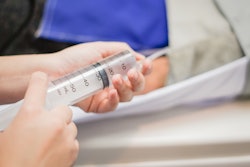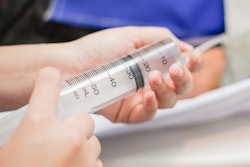
A months-long shortage of iodinated CT contrast -- due to a COVID-19 lockdown of GE Healthcare's Shanghai production facility -- has been mostly resolved, with the company back to normal production and shipping levels as of June 8.
"GE Healthcare's Shanghai facility has been operating at 100% production capacity since Wednesday, June 8, following the easing of local COVID restrictions," the company said in a statement released June 14. "We continue to keep our customers informed as supply recovers."
But the crisis is likely to have long-term effects, in terms of how radiology departments and hospitals around the world stock contrast and where they procure it, according to Dr. Michael Davenport of Michigan Medicine in Ann Arbor. The contrast supply shortage "remains an evolving situation," he told AuntMinnie.com.
"I think we will have a better sense in July of whether things have really returned to normal and if hospitals have reverted back to their former practices -- or not," he said.
Although the acute phase of the contrast supply shortage may be settled, hospitals and radiology departments will need to consider how to avoid a similar disruption in the future, Davenport noted.
"The acute intervention phase is probably coming to an end, but I suspect it will be followed by a months-long introspection on the necessity of contrast for all exams for which it was previously used, the true required dose of contrast, and supply chain implications of the recent event," Davenport said. "There remains supply chain vulnerability because Shanghai is still at risk so long as China maintains a zero-COVID policy."
In April, the world began to experience a shortage of CT contrast due to the effect of a COVID-19 lockdown in Shanghai, China, on GE Healthcare's Omnipaque (iohexol) manufacturing facility. The shutdown had dramatic effect on imaging around the world, and in ensuing weeks, hospitals and radiology departments worked to conserve contrast and experts offered a variety of tips for managing the crisis.
The effort to conserve contrast will persist going forward, Dr. Mahmud Mossa-Basha of University of North Carolina (UNC) in Chapel Hill, told AuntMinnie.com. He did report that UNC is back to receiving regular shipments of contrast.
"[We continue to focus on reducing] waste through multiple uses of vials, maintaining lower contrast dosing for some protocols when image quality is determined to be adequate, tailoring protocols to support reduced dosing, and increasing stockpiles of iodinated contrast in our department," he said. "[But] most other aspects we had implemented have returned to normal, including resumption of all contrast protocols, return to our standard iodinated contrast media agents for specific protocols, and nonradiology department resumption of use of contrast as they were prior to the shortage."
GE plans to remain proactive regarding its CT contrast capacity, a spokesperson told AuntMinnie.com.
"GE Healthcare continues to invest in capacity and supply chain as demand continues to grow," the spokesperson said. "The company has delivered contrast media products reliably around the world for decades, including in the face of global supply chain challenges, and we have invested almost $400 million over the past decade to increase production capacity in our manufacturing sites. Our focus is on restabilizing supply as availability improves."





















